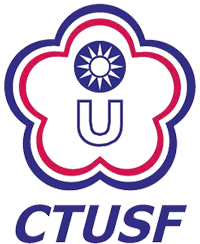Latest Articles
Author:Sheng-Kuang Wu
Period/Date/Page:Vol. 23 No. 2 (2021 / 06 / 30) , Pi - iv
DOI:10.5297/ser.202106_23(2).0000
Sport Science in Taiwan Should Be "Precise"
Abstract:When coronavirus disease 2019 (COVID-19) raged around the world, over 160 million people were infected, and sadly over 3 million people passed away by May 2021. Many countries' economies, politics, jobs, and citizens' lives were traumatized without mercy. Although certain daily activities met inconveniences in Taiwan, most people still lead relatively unchanged lives. Local sporting events in early 2020 that had been postponed or cancelled were gradually resumed after mid-2020, creating a Taiwan miracle. Around the island, many sporting events and scientific research activities are now running smoothly and regulated systematically. Among which, the cross-boundary integration of the 4-year Precision Sports Project (2018–2022) is the one overseen by the Ministry of Science and Technology (MOST). In the January 2021 press conference, the MOST, along with the Sports Administration, Ministry of Education and Industrial Development Bureau, Ministry of Economic Affairs jointly proposed a prospective plan that is "Integrating precision sport science with sporting products and industry." In other words: a cross-domain collaboration between Competitive Athletics, Sport for All, Sport Science, Sport Technology and the Sporting Industry, a drastic change from the tradition, where these independent studies are hard to integrate with each other. This leap physically introduced "Sport Startup Industry" to an otherwise conservative sporting community. At the same time, difficulties tracing back to past sport science research that failed to apply directly to the sport fields due to the extreme gaps between the 2 items. Eisenmann (2017) urged the plausibility of laboratory findings for successful translation to application in the field. USA, the leading power in sport science, training and industry, has long been stuck in the conundrum of theory inadaptable to practices. Similarly, other leading countries also met such difficulty. In the process of trying to eliminate further problems, conducted studies gave answers, but lack of real execution values. These fruitless studies have caused communication problems between researchers and practitioners (e.g., coaches and athletes), and are unable to solve the problems in demand and knowledge transfer (Hanson, Allegrante, Sleet, & Finch, 2014; Verhagen, Voogt, Bruinsma, & Finch, 2014). Sitting among those facing the situations, Taiwan's Sport Science community should possess physical countermeasures and solutions. Science's Precision Breakthrough Gives Better Lives: The an "precision medicine" has been coined by the international medical society for over 10 years. Along its rise in popularity, Taiwan Precision Medicine Society (TPMS) was founded in 2015. Regular medical treatment is usually focuses on the "standardized patient." Although this is useful for most patients, still there are some who receives slight to no effect due to patient differences and heterogeneity of the disease. On the other hand, precision medicine focuses on establishing illness prevention and treatment procedures based on the patient diversities and heterogeneity of disease, bringing "personalized medicine" which is one step forward (Taiwan Precision Medicine Society, n.d.). Precision medicine has greater advancements mainly thanks to the establishment of large-scale bio-databases and analytics. Ground-breaking innovations and technology, such as Artificial Intelligence and Big Data have improved our understanding of diseases and allowed breakthrough in individual treatments (Hodson, 2016). Though there is an unclear definition of "precision sport science" around the world, the MOST proposed the "precision sport science project" in Spring 2018 to link the sport science and industry business. This project is aimed to unify the experts in Sports, engineering and business communities with government authority. Among the 40 initial entries, 8 research teams with focus on baseball, badminton, table tennis, weightlifting, and cycling were chosen. In the first ever sport science research to implement "precision," experts from sport science, big data, internet of things (IoT), biomedical engineering, and physiotherapy were joined forces in cross-disciplinary research. After 2 years of research, initial results have reached the preset goals, with the final results set on being able to directly implement on athletes and public alike. This could possibly give industrial values to specific sports, allowing a highly specific, and innovative sports industry through the joint forces of sport science and technology. The possibility of pushing Taiwan's sport science onto an international stage shines brighter by the minute, with an international collaboration is no longer a dream. After starting off on the right track, government and cross-disciplinary advocators, scientists and practitioners' cooperation along with appropriate resources are needed to further establish the foundations, giving actual application values through scientific findings. Ridding Outdated Ways: Inability to apply research findings, hard to understand research and fruitless yields are the major limitations in the field of sport science. To overturn these prejudices, sport scientists must conduct research with the athletes in mind and apply the protocols according to their needs, gaining trust with coaches and athletes through communications and discussions (Eisenmann, 2017). When scientists criticized the outdated ways of sports training, developing solid and applicable research is necessary. Other than establishing the new facts and publishing "presentable" studies, guiding athletes and coaches on how to apply these facts, and implementing the evidence-based practices instead of continuing using outdated training methods are crucial. Similarly, precision in sport training is another imperative. Other than establishing an effective method, lowers the probability of sports injury (Hanson et al., 2014). We hope future papers submitted to "Sports & Exercise Research" journal should include a condensed section regarding the application and implication, giving practitioners without strong academic background easier access to the core values and meanings of each article, gradually executing them in real training to link theories and practices. (Full text)




